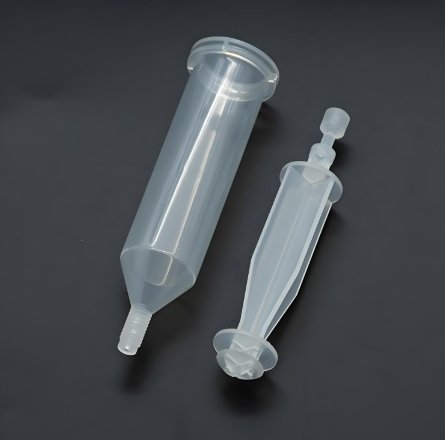
Medical injection molding produces high-precision plastic parts for healthcare. These parts must meet strict safety and quality standards. Mold makers play a key role in ensuring accuracy and durability. This process involves multiple steps, from design to final inspection.
Why Medical Injection Molding Is Important
1. High Precision
Medical tools need exact shapes and sizes. Injection molding provides tight tolerances.
2. Sterility
Medical parts must be contamination-free. Molding in clean environments ensures safety.
3. Mass Production
Large quantities can be made quickly. This reduces costs and increases availability.
4. Strong and Lightweight
Medical devices need durable yet lightweight materials. Injection molding delivers both.
5. Compliance with Regulations
Every part must meet FDA and ISO standards. Injection molding ensures consistency.
Step 1: Design and Prototyping
1. Creating the Design
Engineers design parts using 3D software. The design includes dimensions, material choice, and functional requirements.
2. Making a Prototype
Prototypes are tested before full production. They help identify flaws and improve designs.
3. Selecting the Right Mold Type
Mold makers choose between single-cavity and multi-cavity molds. Multi-cavity molds speed up production.
4. Ensuring Biocompatibility
Materials must be safe for medical use. They should resist heat, chemicals, and wear.
Step 2: Mold Fabrication
1. Choosing the Mold Material
Molds are usually made from steel or aluminum. Steel molds last longer but cost more.
2. Precision Machining
CNC machines create the mold cavities. This ensures perfect detail and accuracy.
3. Polishing and Finishing
Molds are polished to create smooth surfaces. This improves product quality.
4. Testing the Mold
Before production starts, molds are tested. This ensures they produce perfect parts.
Step 3: Material Selection
1. Choosing the Right Polymer
Common medical-grade plastics include:
- Polycarbonate (PC) – Strong and impact-resistant
- Polypropylene (PP) – Chemical-resistant
- Polystyrene (PS) – Clear and rigid
- Polyethylene (PE) – Flexible and durable
2. Checking Material Properties
Materials must meet strength, flexibility, and sterility requirements.
3. Ensuring FDA Approval
All plastics must comply with medical regulations.
Step 4: Injection Molding Process
1. Melting the Plastic
Plastic pellets are heated until they become liquid.
2. Injecting the Material
The molten plastic is injected into the mold under high pressure.
3. Cooling and Solidifying
The plastic cools inside the mold. It takes the exact shape of the cavity.
4. Ejecting the Part
Once solid, the part is ejected from the mold. It is now ready for finishing.
Step 5: Post-Molding Processes
1. Trimming and Deflashing
Excess plastic is removed to ensure a smooth finish.
2. Sterilization
Medical parts are sterilized to kill bacteria. Methods include:
- Autoclaving – Steam sterilization
- Gamma Radiation – High-energy sterilization
- Ethylene Oxide (EtO) Gas – Chemical sterilization
3. Surface Treatment
Some parts need coatings or texturing for better performance.
Step 6: Quality Control
1. Visual Inspection
Parts are checked for defects, cracks, or deformations.
2. Dimensional Testing
Precision tools measure each part’s accuracy.
3. Mechanical Testing
Strength and flexibility tests ensure durability.
4. Biocompatibility Testing
Parts are tested to ensure they are safe for medical use.
Step 7: Packaging and Sterile Handling
1. Cleanroom Packaging
Medical parts are packed in sterile environments.
2. Sealing and Labeling
Each package is sealed and labeled with batch numbers.
3. Final Quality Check
Before shipping, all products undergo a final inspection.
Challenges in Medical Injection Molding
1. Meeting Strict Standards
Medical devices require precise tolerances and strict FDA approval.
2. Material Selection
Choosing the right plastic is crucial for performance and safety.
3. Maintaining Sterility
Parts must remain contamination-free from production to use.
4. Reducing Production Costs
Optimizing molds and processes can lower costs without sacrificing quality.
The Role of Mold Makers in Medical Injection Molding
1. Creating High-Precision Molds
Mold makers design and fabricate molds with exact specifications.
2. Ensuring Consistent Quality
They maintain tight tolerances for every batch.
3. Optimizing Mold Longevity
Durable molds reduce downtime and improve efficiency.
4. Implementing Advanced Technologies
New techniques like micro-molding enhance precision.
Future Trends in Medical Injection Molding
1. 3D Printing for Prototyping
Faster and cheaper mold testing with 3D printing.
2. Smart Medical Plastics
New materials with antimicrobial properties.
3. AI-Powered Quality Control
Automated inspection for faster defect detection.
4. Sustainable Materials
Biodegradable and recyclable plastics for medical use.
Medical injection molding is essential for producing high-quality medical devices. The process involves multiple steps, from design to final inspection. Mold makers play a crucial role in ensuring accuracy, durability, and sterility. As technology advances, medical molding will become even more precise and efficient.
